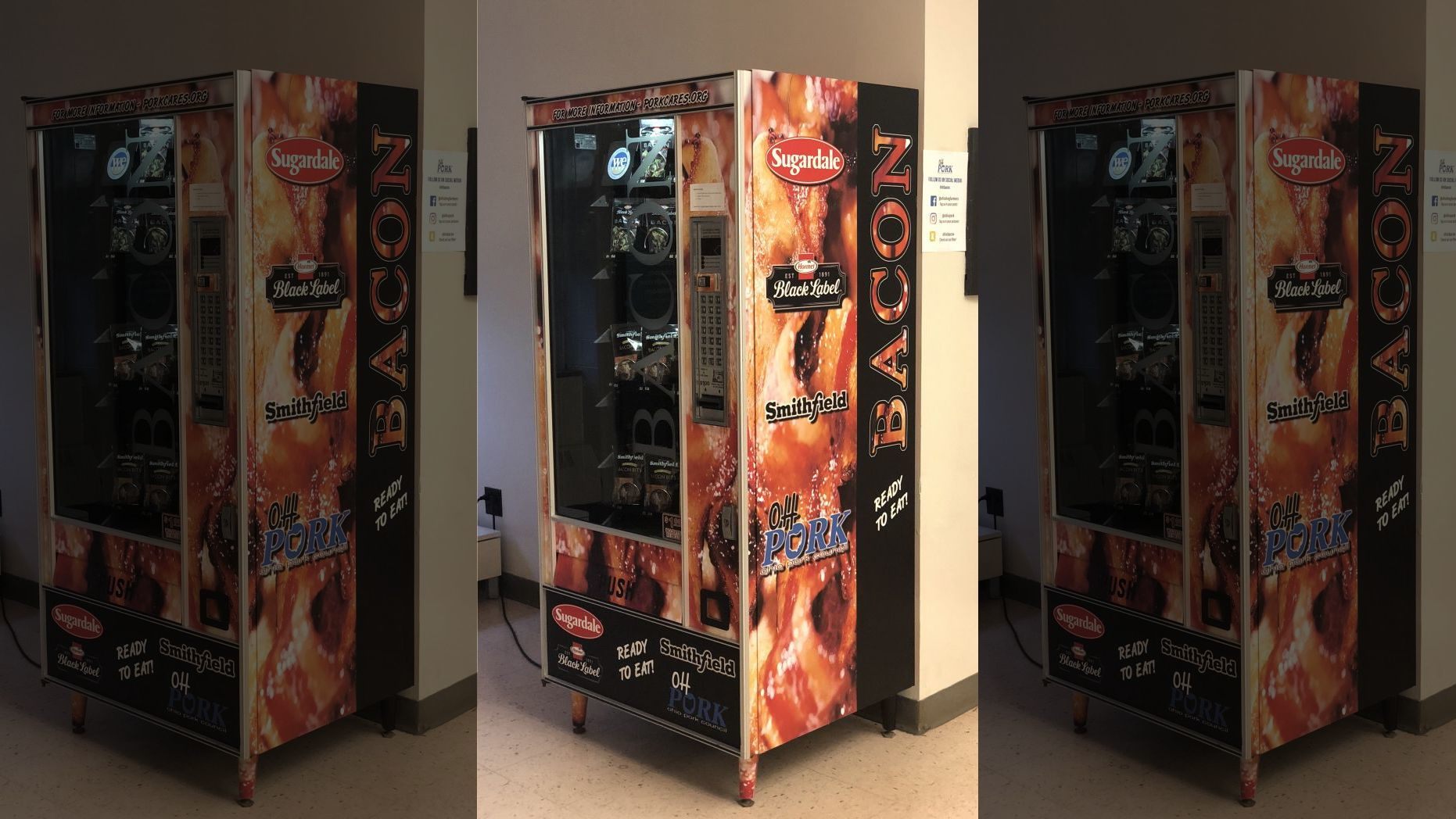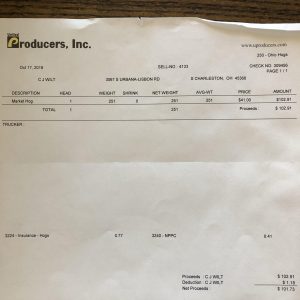
Courtesy of Ohio Pork Council
 By Melanie Wilt
By Melanie Wilt
The bacon vending machine introduced this week at my alma mater, the Ohio State University’s College of Food, Ag & Environmental Sciences has received a ton of press. I’ve read articles citing the Ohio Pork Council and the Meat Science Program (both near and dear to my agricultural heart) on USA Today, FoxNews, and even a few sports blogs.
Who would have thought this would be bigger news for Ohio State than Urban Meyer’s retirement?
And, how exactly does an association of farmers and an academic institution come up with and execute a crazy idea like bacon for a buck?
Pennies.
That’s right. Pennies contributed from farmers to a “check-off program” that add up to a fund that supports national market research, new ideas, projects, educational programming, and awareness campaigns – all in the name of improving the industry and expanding markets for pork products.
A Sugardale/Hormel/Smithfield sponsored bacon machine doesn’t just appear because a guy had a dream.
Now, you may wonder why the small farmer has to pay into a big fund in order to support national and state campaigns to increase demand. The check-off isn’t mandatory; some farmers choose to opt-out. However, the vast majority participate in the check-off program because they know it’s there to help support their bottom line.
Here’s how it works:
My 13-year-old son, CJ, sells his 4-H pig through the livestock markets. He receives a check back in the mail. The market that takes a tiny percentage of their profits and invests it into the check-off fund. This year, the going rate for a 251 lb. pig was $102.91 (yes, the market is in a slump!). After those proceeds, there are two deductions: one for insurance and one for the National Pork Producers Check-off. The check-off deduction was $0.41. Pennies, but an investment in his future as a farmer and consumer.
My 66-year-old dad does the same each time he sends a load of hogs to market – roughly 6,000 a year – so you can imagine the deductions are greater, but in the whole scheme of things, he benefits the most. It’s a very equitable system.
If you’re a farmer, this kind of group marketing makes perfect sense.
First of all, raising meat is wrought with all kinds of risks and challenges. Livestock – and the soy and corn they eat – are commodities, which means the individual farmer doesn’t really have an opportunity to market his or her product directly to the consumer without an awful lot of extra effort. Sure, if you have a few pigs, you can take them to market and sell them to local families, restaurants or grocers. But, most farmers are not expert marketers — they’re experts at animal care, feed rations and manure management.
The pork check-off program provides a few things farmers don’t have to worry about, such as:
- Best production practices. Your average farmer couldn’t afford to call in Dr. Temple Grandin to help evaluate his animal handling practices, but the check-off can and has worked with her to establish new best practices for the industry.
- Consumer research. What do consumers want? Well, I think it’s clear they want BACON! And they want it now. Check-off research has shown that bacon is pop culture phenomenon, and farmers should find a way to provide it in real-time, such as through a vending machine.
- Product development. Check-off funds have been invested in helping to develop shelf stable bacon products. It’s no accident that these products are able to be vended. Much research, planning and development went into the packaging, labeling and food safety for these products before they could ever touch the lips of a hungry college student.
- Education and Communication. A bacon vending machine is only another vending machine until people know about it. The fact everyone is talking about Buckeye Bacon more than Buckeye Football this week is no accident. Check-off funds are dedicated to communication and public relations efforts to develop partnerships across academia, industry and the private sector, create messaging that connects effectively with consumers, and convinces hungry co-eds to put in a buck and get out some bacon.
The pork check-off is a great example in light of the headlines this week, but hogs aren’t the only sector of agriculture that benefits from check-off programs. The corn, soybeans and wheat that go into animal feed area also advanced by check-off funds. Other livestock programs – beef, poultry and sheep – receive investments from their producers to boost their profitability, as well.
Hats off to a brilliant use of our pennies and dollars by one of our trusted check-off programs. The farmers you support are smiling this week as we take pride in a job well done for our industry!
